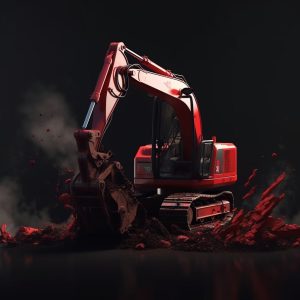As a business owner in the construction and mining industry, you’re always looking for ways to cut costs and maximize efficiency. One strategy that you might be considering is the use of sub-industry parts. These parts are often cheaper and more readily available than OEM (original equipment manufacturer) parts, but they come with their own set of advantages and disadvantages. In this blog post, we’ll explore what sub-industry parts are, how they can benefit your business, and what you need to consider before using them.
What Are Sub-Industry Parts?
Sub-industry parts are parts that are manufactured by companies other than the original equipment manufacturer. These companies specialize in creating replacement parts for specific pieces of machinery or equipment. Sub-industry parts can include everything from engines and transmissions to hydraulic pumps and tires. Essentially, if there’s a part that can be replaced on a piece of machinery or equipment, there’s a good chance that a sub-industry part is available for it.
The Benefits of Using Sub-Industry Parts
One of the most significant benefits of using sub-industry parts is cost savings. OEM parts can be expensive, and if you’re operating a large fleet of machinery or equipment, those costs can add up quickly. Sub-industry parts are often significantly cheaper, allowing you to save money without sacrificing quality.
Another advantage of using sub-industry parts is that they’re often more readily available than OEM parts. OEM parts can take time to order and ship, which can lead to costly downtime for your business. With sub-industry parts, you can often find what you need in stock at a local supplier or dealer, reducing downtime and getting your equipment back up and running faster.
In addition, many sub-industry parts are manufactured to be compatible with multiple brands and models of equipment. This can be beneficial if you have a mixed fleet of equipment from different manufacturers, as it can simplify your parts management and reduce the number of suppliers you need to work with.
Drawbacks of Using Sub-Industry Parts
While sub-industry parts offer several benefits, there are also some potential drawbacks to consider. One of the most significant drawbacks is that the quality of parts can be variable. Some manufacturers produce high-quality parts that are virtually indistinguishable from OEM parts, while others may produce parts that are prone to failure or premature wear and tear.
In addition, using sub-industry parts can sometimes void the warranty on your equipment. This is something to consider if your equipment is still under warranty, as you may be better off sticking with OEM parts to avoid any potential issues with warranty coverage.
Another potential issue with these parts is compatibility. While many parts are designed to be compatible with multiple brands and models of equipment, there may be instances where a part isn’t compatible with your specific equipment. This is another reason why it’s essential to work with a reputable supplier or dealer who can help you choose the right parts for your equipment.
What You Need to Consider Before Using Sub-Industry Parts
If you’re considering using sub-industry parts, there are a few key things you need to keep in mind. First and foremost, it’s essential to work with a reputable supplier or dealer who can provide high-quality parts and offer support if you run into any issues.
Additionally, you should do your research to ensure that the parts you’re considering are compatible with your specific equipment. This may involve consulting with the manufacturer of your equipment or working with a knowledgeable supplier who can help you navigate compatibility issues.
Check out our other articles for more…









